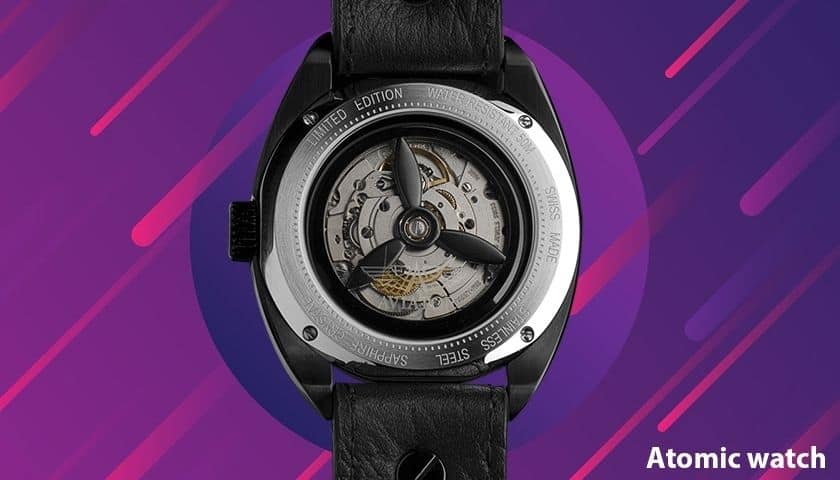In a world increasingly governed by precision, the allure of atomic watches emerges as a beacon of technological advancement. By harnessing the vibrations of atoms, particularly cesium or rubidium, these timekeeping instruments promise unparalleled accuracy. A salient question arises: will atomic watches work well in India? To explore this prospect, one must delve into several critical facets, including the technological underpinnings of atomic timekeeping, the geographical and infrastructural context of India, and the implications of time synchronization for various sectors.
To commence, it is essential to understand the foundational technology behind atomic watches. Atomic watches utilize the vibrations of atoms as their primary timekeeping mechanism. Cesium atoms, for instance, oscillate at a frequency of 9,192,631,770 times per second, which allows for an extraordinary precision of one second in over 30 million years. Such accuracy is a result of meticulous synchronization with national time standards and global positioning systems, allowing atomic watches to correct for time discrepancies that might accrue in conventional watches.
Translating this technology’s effectiveness to the Indian subcontinent necessitates an examination of the preexisting infrastructure and accessibility. India, with its diverse and expansive geography, poses unique challenges regarding time synchronization. The Indian Space Research Organisation (ISRO) has made significant strides in developing satellite navigation systems, most notably the Indian Regional Navigation Satellite System (IRNSS). This indigenous program enables accurate positioning services across the nation. However, the integration of atomic watches requires seamless communication between these devices and available satellite networks.
A pivotal point of inquiry is whether atomic watches can effectively synchronize with India’s timekeeping standards. The Indian time zone—Indian Standard Time (IST)—is set at UTC+5:30. Ensuring that atomic watches can seamlessly adjust and display this time zone is integral. Given that the infrastructure is largely based around the Indian time zone and various time-sensitive sectors, such as aviation and telecommunications, a reliable synchronization mechanism is not merely a luxury but a necessity. Deploying and maintaining atomic watches in India would necessitate sophisticated technological frameworks that can accommodate not just the devices themselves but the associated network for continuous time updates.
Moreover, consider the cultural context in which these timepieces are introduced. In India, the concept of time often embodies a fluidity that contrasts sharply with Western notions of time as a rigid boundary. This cultural perspective could influence the acceptance and application of atomic watches. Are individuals and industries in India prepared to embrace a paradigm where precision reigns supreme? The psychological shift towards valuing exactitude over the traditional flexibility could pivotally affect the commercial viability of atomic watches in the Indian market.
On practical grounds, one must consider the economic implications of adopting atomic watches in India. The initial cost of such technology may be prohibitive for an average consumer. Atomic watches are generally more expensive than their quartz counterparts and require sophisticated technology for effective operation. Would there be a market for such devices, or would the investment in precision be deemed excessive? In addition to the retail market, sectors such as scientific research, telecommunications, and transportation could find value in atomic timekeeping, potentially justifying a higher price point due to the utility realized from enhanced accuracy.
From the perspective of scientific research, the implications of utilizing atomic watches are profound. Institutions engaged in astrophysics, geophysics, and other sciences that rely heavily on precise timing could leverage atomic timekeeping for experiments and data collection. The availability of such accurate timepieces could facilitate groundbreaking research in areas such as global positioning, seismology, and astronomical observation. Conversely, the mainstream adoption of atomic watches might tether the scientific community and general populace to a more synchronized lifestyle, enhancing collaborative efforts across various domains.
Additionally, the technological infrastructure necessary for atomic watches to function optimally must not be overlooked. High-quality atomic watches generally require a stable power source and an environment less prone to external interferences. In India, where humidity, temperature variations, and electromagnetic interference might present challenges, the resilience and design of atomic watches would be instrumental in ensuring their reliability. Manufacturers would need to prioritize robustness and adaptability in the contexts of both urban and rural environments.
Intriguingly, international perceptions and policies regarding timekeeping will culminate in a fascinating dialogue with how atomic watches are viewed in India. As the nation positions itself within the global arena, the ability to accurately gauge time becomes a matter of sovereignty. Will Indian atomic timekeeping be influenced by external standards, or will it establish its unique trajectory? The ramifications of these questions not only impact the realm of horology but also engage with broader discussions around technology, culture, and identity.
Ultimately, the efficacy and practicality of atomic watches in India intertwine with an array of variables. From technological prowess to cultural acceptance, economic viability to infrastructural readiness, each element threads together to form a complex tapestry that decides whether atomic watches will thrive in the Indian context. As the nation continues to evolve technologically and culturally, the curiosity surrounding atomic timekeeping serves as a microcosm of a larger narrative: the perpetual quest for precision amid the ever-shifting dynamics of time.












